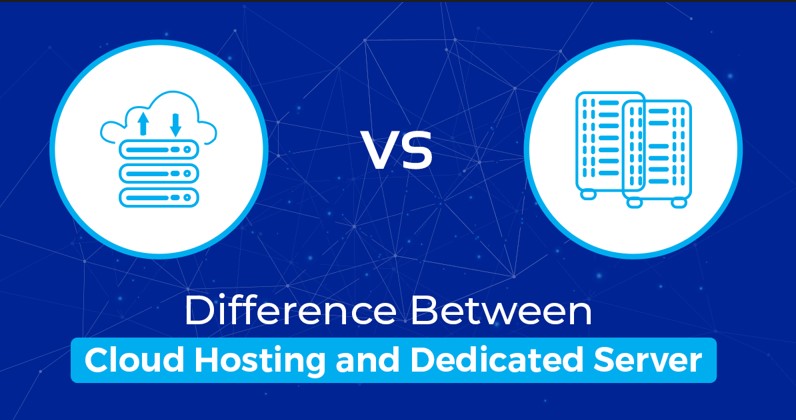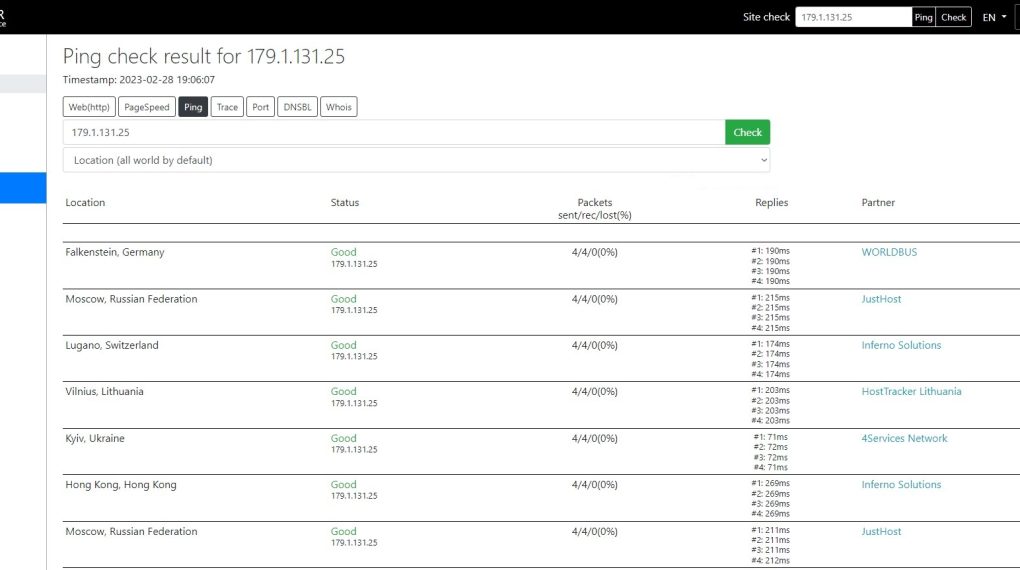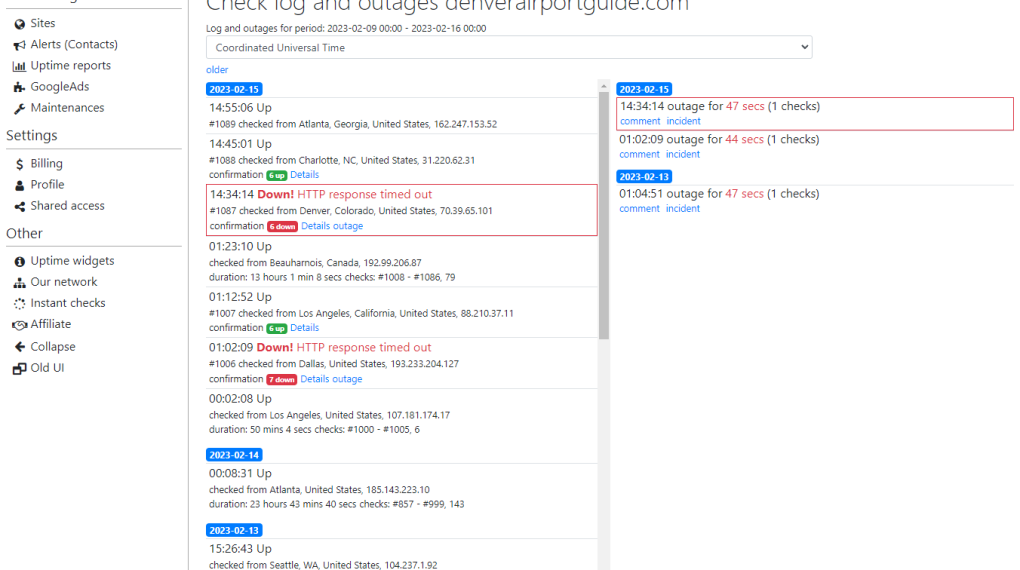
Any web project, whether it be business software, a mobile app, a website, or anything else, needs a place to keep files and process user requests before it can go live. Of course, this place is a server, no matter which type. Because there are a lot of various types from virtual shared and private to cloud-based and physical dedicated.
And before picking the ideal option, keep in mind the following three factors to consider: overall performance, uptime and accessibility, dependability and reliability. Other things like the financial aspect are undoubtedly important, too. But they are way less crucial. And they should be taken into account only when the first three were prioritized and considered.
What Are Dedicated Servers
In essence, a dedicated server is a physical machine that is located in a specific place. Although in this regard it’s similar to virtual private instances and even to shared ones, it has a significant difference. Its performance belongs solely to one user without sharing it with anyone. And without using any virtualization technologies. It is basically a single hardware instance in all regards, usually even including user-related rights to configure the software.
The location of the hardware is another important factor that varies among dedicated servers. They can be in a remote location with high latency or in a building with exceptional bandwidth and low response time, even if they are all similar hardware instances installed in real places.
Hosting providers often cluster hardware installations in one place for easier maintenance access, but there are also private data centers that house several dedicated or shared servers, as well as hardware installations for different hosting providers.
Hosting providers must consider the quality of service, reliability, bandwidth, and other factors when choosing a data center, but users can easily find out all necessary information about the data center and its tier before selecting a hosting provider and its services.
What Are Cloud Servers

Cloud-based server technology is a modern way to implement a fail-safe mechanism on a large scale to the websites hosted on classic web servers. In fact, it is a technology that utilizes a pack of hardware instances (or even a pack of several data centers) that are scattered around the world, but united into a decentralized network to share resources with each other.
Basically, this is a large cluster with virtualized and unified processing and storage capabilities. And various clouds usually differ based on two types of performance. Therefore, there are general-purpose clouds and computing-optimized clouds.
If you speak about how clouds work in general, then it’s simple and looks almost like a virtual private server. Being, in fact, a virtual instance, a cloud dedicates a part of its resources as a partition for a particular project.
This dedicated part is entirely separated from other instances in the same cloud but is still backed up by the whole cluster in case of emergencies or the need to increase resource consumption. Taking the size and potential of the cloud, every project using it is able to easily adjust everything to fit its needs, its owner paying only for what it really gets.
Dedicated Vs Cloud – Pros And Cons
Comparing dedicated and cloud servers are a vital part of choosing one of them for yourself. Because, considering all the basics said above, there are a lot of various nuances to think about before picking the right system to work with. And, of course, you need to double-check everything before you pay, because it’s better safe than sorry.
Performance Comparison
Performance-wise, dedicated servers are on top due to their high raw output and large storage space. Being a literally private instance on a physical hardware instance, it has lower latency and data loading speed along with high processing capabilities you can know and understand before you pay anything for it.
Moreover, dedicated server instances give literally everything they’ve got to the project that’s hosted on them. Of course, as it was mentioned, there will be no one else on the same instance with your project, therefore no one will slow down performance for sure. And to deal with processing-demanding tasks, there will be nothing better than a dedicated server.
Clouds have a major disadvantage in this regard. It’s called hypervisor latency. This is an unavoidable effect of the cloud instances being virtualized as a part of a large cluster. Simply put, every single request must be virtualized by the hypervisor as well as its response. And this could noticeably affect the web project’s performance. To avoid that, the project’s owner will have to spend a lot of time adjusting functionality and usability. And it’s not a fact that it will really help much.
Scalability Possibilities
Scalability is an essential factor to consider when making a choice between a dedicated server and the cloud. Dedicated ones, as physical machines, have limitations in terms of scaling their performance to fit the changing requirements. Its processing power is fixed and can’t be increased without installing additional hardware modules to the physical machine. And from the user’s perspective, it can be a really time-consuming and expensive process. Even if you’re renting one and want to upgrade it via hosting, it will still be less suitable for projects that can possibly require frequent scaling.
Clouds are completely opposite in this regard. Because those are virtualized machines with no bond to a particular hardware instance, it’s easy to adjust available resources as the user’s project demands. You’ll simply pay more for the subscription if you need more processing output. And if it’s needed, you can easily lower the provided amount of resources, lowering your subscription cost as well. This flexibility makes them ideal for applications that can have traffic spikes, such as e-commerce websites, social media platforms, and gaming applications.
Another advantage of cloud servers in terms of scalability is that they offer geographic scalability. Cloud providers have data centers located in different regions, allowing users to deploy their applications in multiple locations. This helps in reducing latency and providing a better user experience, particularly for applications that are used by customers worldwide.
It’s worth noting that while clouds may be more flexible and scalable, offering greater redundancy, they also have a lot more complexity and potentially less security than dedicated ones. Simply put, when on a dedicated instance you completely control the hardware along with the software, the cloud gives you little to no options in this regard. Therefore you’ll be unable to provide security measures for your server in a way you see fit and require. On top of it, cloud instances may require additional measures to ensure data protection, such as encryption and secure access controls.
Migration Procedures And Difficulties
The migration of web projects can be accomplished smoothly with both dedicated and cloud servers. However, moving to a dedicated server requires more preparation and planning. It is important to consider both the current needs and future expansion of your project when planning for a dedicated server environment. A thorough plan should be developed and implemented to ensure a successful migration.
Moving to the cloud, on the other hand, poses different challenges. You need to evaluate how well your online project and any integrated or connected applications will work with cloud technology. Additionally, you need to obtain the necessary permits and ensure compliance with regulations. These factors are crucial in ensuring a smooth and successful migration to the cloud.
Regardless of the chosen architecture, it is vital to run the old and new instances in parallel until the new one is fully prepared for the migration. It is also crucial to maintain backups and possibly even backups of backups to ensure data safety and minimize downtime in case of any unforeseen issues during the migration process. With proper planning and preparation, both dedicated and cloud servers can offer a smooth and efficient migration for your web project.
Stability Monitoring Routines

Most hosting providers fall short in terms of providing comprehensive monitoring solutions for their customers. They typically only monitor hardware stability on dedicated servers, leaving the rest up to the consumer. Therefore, it is your absolute responsibility to ping server 24\7 with host-tracker tool, for example, and to keep an eye on web project metrics to make sure everything is running smoothly. Automated monitoring solutions such as HostTracker can help with this task.
While cloud hosting platforms usually provide basic monitoring, they are not always sufficient, especially in the case of major issues. Therefore, it is still recommended to use HostTracker or other monitoring services to ensure the smooth operation of your online project. In addition to monitoring your website’s availability, HostTracker can also help you control your Google AdWords subscription and shut it down if necessary.
Regardless of whether you use a dedicated server or cloud, it is essential to have extensive monitoring in place. There are various monitoring tools available. From speed testing, accessibility evaluations, and beginner-friendly tools like https://www.host-tracker.com/en/ic/whois-check, to database evaluations, data integrity checkers, and domain name expiration notifications. By utilizing these tools, website owners can ensure the smooth operation of their web projects and prevent any potential issues.
Maintenance And Crisis Management

If you use a dedicated server, you must keep in mind that it’s your responsibility to administer and maintain it. Even if you’re renting one from hosting, you still need to deal with its monitoring in case of emergencies – the provider won’t be notifying you if there’s a power outage in his data center. And during scaling, upgrading, and maintenance times, it’s crucial to have access to environmental monitoring to ensure everything is working as it should. While some extra IT resources may be necessary for certain activities, you should be aware of this responsibility.
However, if you’re not familiar with server administration, don’t worry. With dedicated server providers that offer completely managed services, you’ll have peace of mind knowing that experts are taking care of your server for you. But not every provider has something at least decent to offer. Most of them have only basic things that won’t be helpful in terms of monitoring. And that’s when you can use a toolkit on host-tracker.com to check site availability and take care of monitoring the environment and ensuring it runs smoothly.
But clouds are really simple in terms of monitoring their performance. Providers monitor their servers constantly, and even if one of the data centers will go down, you probably notice it only in the notification. On top of it, there are a lot of useful tools that are integrated into the control panel to deal with monitoring and management issues as soon as possible if they occur with your particular cloud instance.
Prices and variability
Cloud technology in its current state already made a revolution in all spheres of everyday life, including how businesses work, saving costs on relatively cheap servers when not needed, but easily flexible when it is required. And compared to dedicated server instances those are affordable and sometimes even can be considered cheap. Because you pay for what you get and what your project requires.
But this price advantage becomes less and less noticeable if your web project grows in size and in required performance and storage. Because with scaling everything up, cloud resources will become more and more expensive. Until the difference becomes literally irrelevant or even having a dedicated instance will become cheaper.
All that’s mentioned above makes it worth noting that only public clouds are relatively cheap. When it comes to private ones, with more output and scalability potential, the prices will be a lot higher. To the point when you can forget about such a cloud if you’re owning a small startup. It will be more viable to rent a physical instance to run your project.
Nevertheless, if you think about clouds from another perspective, you’ll notice that their scalability is very cost-effective, as well as their hosting-side monitoring and maintenance. And that’s without even mentioning that you won’t need your own webmaster team to deal with the cloud and adjust it as you see fit. Because you’ll be able to easily set up everything or will get help from the cloud support and management team.
Read Also:






